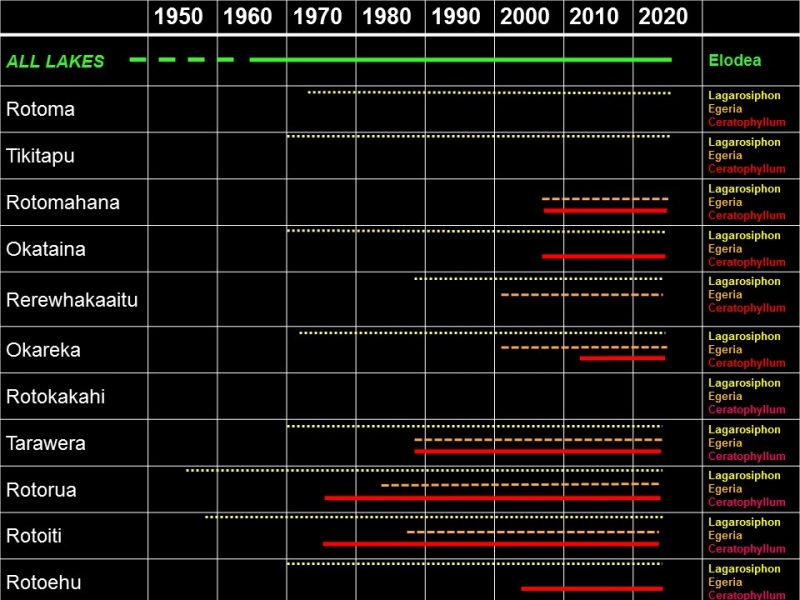The Rotorua Lakes are of volcanic origin and they form an integral feature of the regions landscape. These scenic lakes provide unique cultural values and a diversity of recreational activities.
Rotorua lake weeds rose to public and political prominence in the 1960s and the first seminar addressing this issue was held in 1964. A second meeting followed in 1966 with a "seminar on water weeds". These seminars involved outside experts and many people will remember Prof Val Chapman, University of Auckland who had a prominent role supervising research on these weed problems with his students.
Some of the key changes in the Rotorua Lakes over time include deteriorating water quality; a decline in kakahi (freshwater mussels) and koura (freshwater crayfish); and an increase in invasive aquatic plants (Figure 1). Fortunately some of the worst invasive pest fish species, such as catfish have not yet established, despite some close calls.
Historical successes in eradicating some of the world's worst weeds include water hyacinth (Eichhornia crassipes) from L. Rotorua in the 1950s; entire marshwort (Nymphoides geminata) from L. Okareka in the 1980s; water poppy (Hydrocleys nymphoides) from L Rotoehu in the 1970s. Waternet (Hydrodictyon reticulatum) was a significant macroalgae problem on Lakes Rotorua and Rotoiti in the late 1980's to early 1990's, but its demise was facilitated by targeted chemical (diquat) control of Egeria densa (oxygen weed) weed beds that provided an attachment habitat for dense waternet growth.
Presently, submerged weed species are the major management challenge in the Rotorua Lakes, particularly hornwort (Ceratophyllum demersum), and the three Oxygen weed species (Lagarosiphon major, Egeria densa and Elodea canadensis). These invasive species smother and displace desirable native plant species, and they form nuisance surface reaching growths that require annual control in several lakes.
Submerged aquatic plants provide a window into understanding a lakes health and condition. Native and invasive plants can be used to assess or describe lake condition, enabling lakes to be ranked, compared and monitored for change over time. For example, the maximum depth of submerged plant growth responds directly to annual water clarity in each lake. Lakes Rotoma, Okataina and Okareka are considered to have had stable water clarity over the last 30 years; Lakes Rotomahana and Tarawera have been declining over the last 25 years; while Lakes Rotorua and Okaro have shown recent improvement.
More information
Presentations from the Lake Water Quality Society Symposium will be made available on the LWQS website.

